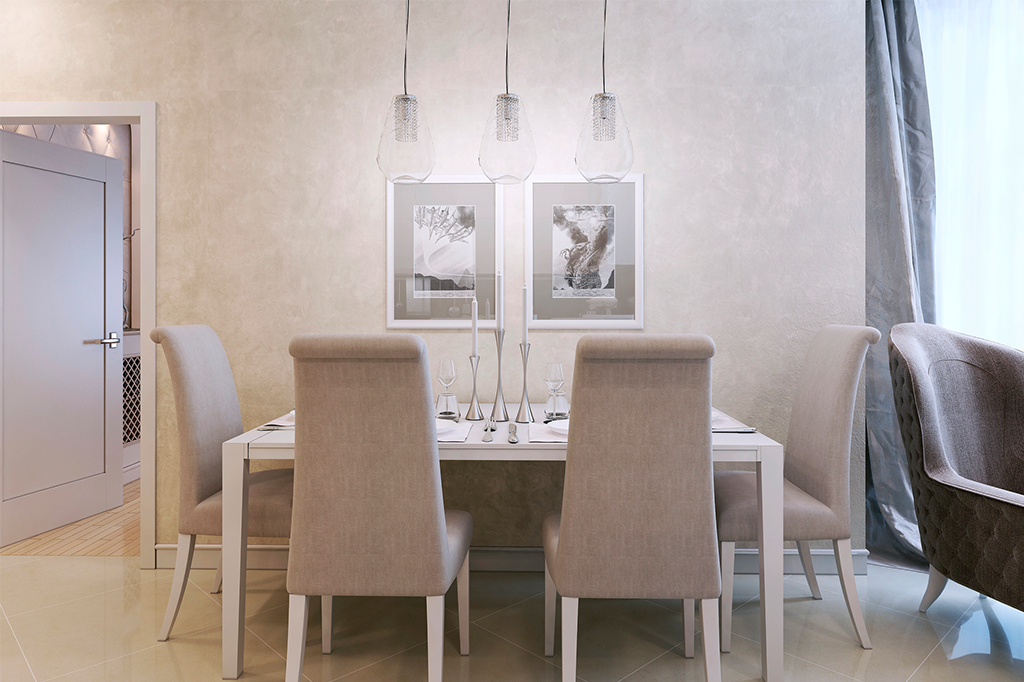What is the Best Type of Lighting Fixture to Highlight Interior Art?

Displaying art is about more than just choosing the right piece. It’s also about how that piece is lit. The right lighting can bring out color, texture, and depth in ways natural light alone cannot.
Whether you’re showcasing a single painting or curating an entire gallery wall, selecting the best lighting fixtures makes a noticeable difference. From spotlights and track lights to recessed and shelf lighting, each option offers unique advantages depending on your space and style.
This guide breaks down how different lighting approaches can work with your artwork to create a display that feels intentional, well-lit, and visually balanced.
How Do Spotlights Work for Highlighting Art?
Spotlights are a popular lighting option for showcasing artwork because they provide focused, directional illumination that draws the eye exactly where you want it. Unlike ambient or general lighting, spotlights are designed to produce a concentrated beam, making them ideal for highlighting a single painting, sculpture, or photo without washing out the surrounding space.
One of the defining features of a spotlight is its narrow beam spread, which can be adjusted based on the size and distance of the art. Adjustable beam angles and swiveling heads allow you to fine-tune the focus, offering flexibility whether you’re lighting a portrait in a hallway or a statement piece above a mantle, just like with foyer lighting.
Spotlights are especially common in gallery-style installations and luxury home settings where visual impact is key. Available in wall-mounted, ceiling-mounted, or surface-mounted designs, they offer a sleek solution that can blend seamlessly into the room or act as a design element themselves, just like a chandelier with foyer lighting.
To minimize glare and shadows, aim the beam at a 30-degree angle to the artwork. This reduces reflected light and keeps shadows from distorting the visual. Using bulbs with high color rendering index (CRI) values also helps preserve the integrity of the artwork’s colors. With careful placement, spotlights offer a refined way to bring attention to fine art.
Is Track Lighting a Good Option for Displaying Multiple Art Pieces?
Track lighting is a versatile and practical solution for displaying multiple pieces of art at once. Its main appeal lies in flexibility. Track systems consist of a mounted rail that allows individual fixtures to be positioned anywhere along the track. Each light can be aimed and adjusted independently, making it easy to spotlight different works in a single space.
This adjustability makes track lighting ideal for gallery walls or rotating displays where the layout may change over time. As your collection evolves, your lighting can adapt without the need for rewiring or new installations.
Modern track lighting systems have come a long way from their industrial roots. Today’s designs include minimalist and low-voltage options that blend into the room seamlessly. Sleek finishes, smaller profiles, and dimmable features make them suitable for upscale settings without overwhelming the decor.
One advantage of track lighting is its ability to provide focused light to multiple pieces without relying on multiple light sources. However, the visibility of the track itself may not suit every aesthetic. While some appreciate the contemporary look, others may find it too utilitarian.
Still, for those who want an adjustable system that grows with their space and artwork, track lighting is a solid and stylish choice worth considering.
Can Recessed Lighting Be Used to Highlight Artwork?
Recessed lighting, often called can lighting or downlights, is installed flush with the ceiling, creating a clean and streamlined appearance. This design makes it a favorite in modern homes where a minimal aesthetic is preferred. Though often used for general illumination, recessed lights can also serve as an effective method for highlighting artwork when paired with the right trim.
Directional trims, such as gimbal or adjustable eyeball fixtures, allow the beam to be aimed at a specific angle, making it possible to direct focused light onto paintings or sculptures. This turns basic overhead lighting into functional interior art lighting without adding visual clutter to the room.
While recessed lights offer subtlety and sophistication, they do have limitations. They’re less flexible than track systems, as each light must be carefully planned and installed to align with your art. Adjustments after the fact can be costly or complex.
For best results, position recessed fixtures about 24 to 36 inches from the wall and aim them at a 30-degree angle to minimize glare and shadows. Spacing them evenly can help provide balanced coverage across a gallery wall or series of framed works. With thoughtful placement, recessed lighting can quietly support your art while keeping the focus exactly where it belongs.
How Can Shelf Lighting Work with Art Displays?
Shelf lighting is a stylish and practical way to illuminate art displays, particularly for sculptures, collectibles, or smaller framed pieces. This type of lighting involves integrating low-profile fixtures, such as LED strips, light bars, or puck lights, directly into the shelving unit or floating shelf. The result is an elegant presentation that brings attention to each item while also adding a layer of visual interest to the entire space.
One of the key advantages of shelf lighting is its ability to reduce glare. Since the lights are positioned above or below the display piece, they offer soft, even illumination without casting harsh reflections. This makes shelf lighting an excellent choice for glass-framed pieces or delicate objects that benefit from a gentler touch.
In addition to highlighting artwork, shelf lighting can also function as accent lighting, casting a warm glow that elevates the room’s ambiance. Design considerations play a big role in achieving the right effect. Color temperature should match the tone of the art, while placement within the shelf determines how the light interacts with shadows and surfaces.
Whether you’re designing for a modern living room or a boutique gallery, shelf lighting provides a refined, built-in way to showcase curated displays while contributing to the room’s overall aesthetic.
Who Can I Talk to About Art Lighting Design?
Highlighting art is both a creative and technical process. The right lighting fixture can bring dimension, clarity, and emotion to a piece, no matter if it’s a bold canvas, a sculpture, or a series of framed works.
From the clean lines of recessed lighting to the flexibility of track systems and the elegance of shelf lighting, each option plays a distinct role. If you’re ready to explore the best lighting solution for your space, contact Lighting Distinctions today and speak with our lighting design consultants about your project.
